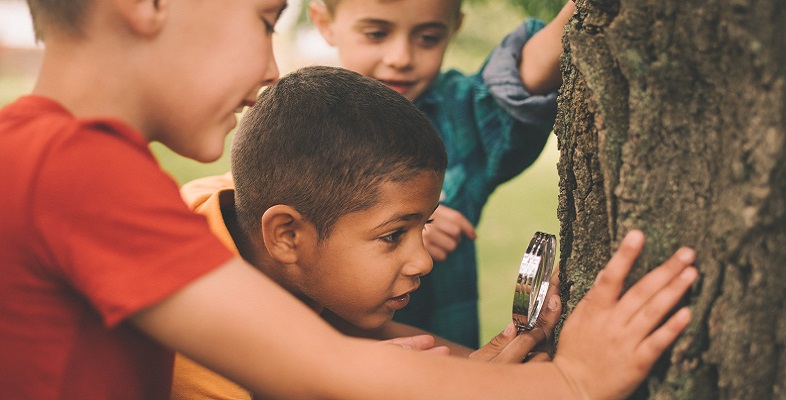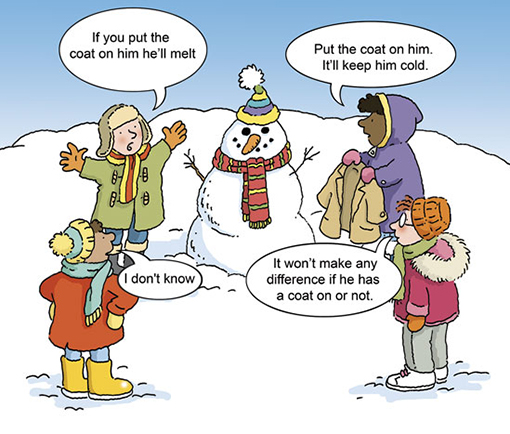2.5 Constructivism and science
Linking new ideas with old, adapting and modifying ideas to inform thinking and ways of working are all in keeping with a social constructivist view of learning. This involves connecting learning with children’s prior experience and building on their existing skills. If insufficient account is taken of children’s existing understanding (including ideas that may be incorrect), children are unlikely to see the relevance or make connections with their own experience.
Questions that ask a child to remember something or apply a rule are unlikely to reveal their conceptual understanding. Various techniques can be used to find out what ideas a child holds about a topic or scientific concept. For example, you could use a concept cartoon depicting a situation, with two or three statements about what is happening. Children then look at the cartoon, decide which statement(s) they agree or disagree with, and say why. Engage with the example below to see this technique in action.
Activity 8 Using concept cartoons
In Figure 5, children are building a snowman. They want to keep it for as long as possible. One child wants to put a coat on it, but the other isn’t sure this will help preserve it. Do you think the coat will delay or speed up melting or have no effect? Why? Add your thoughts to the box below.
Answer
The coat would delay melting because it would reduce the energy being transferred from the external environment. It is the same principle as using cooler bags to carry frozen food when shopping. However, coats are associated with keeping warm, so it is not unusual to reach the wrong conclusion that the coat would increase the rate of thawing.

